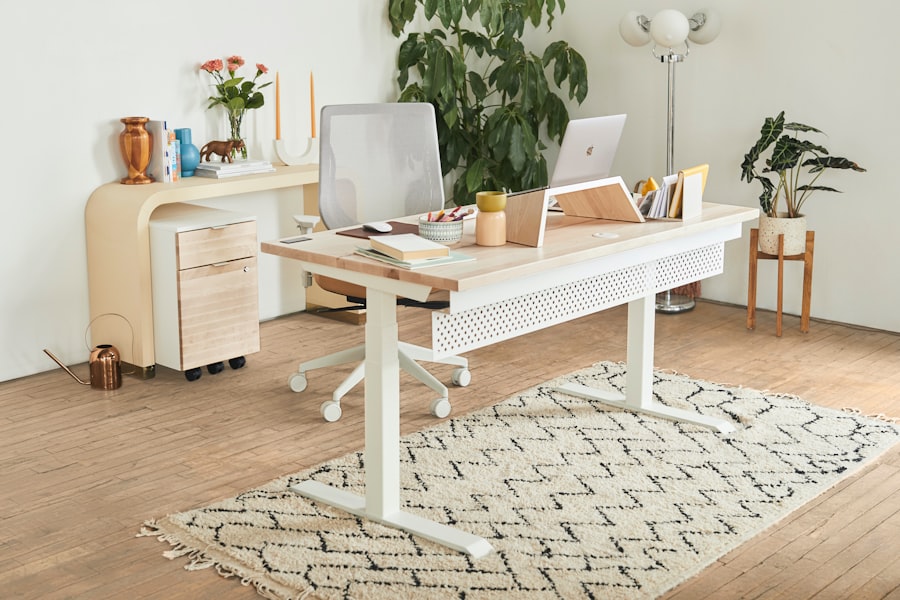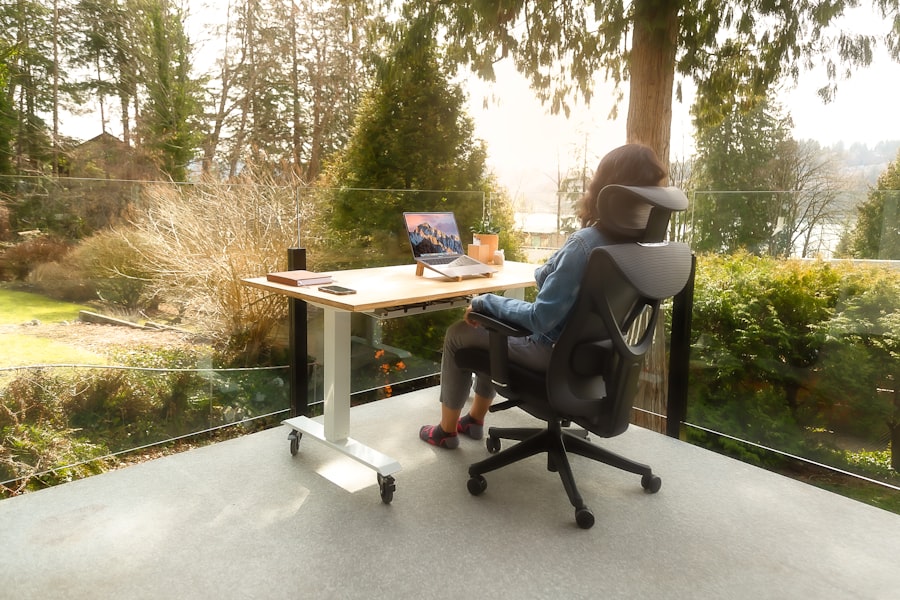Selecting the appropriate office furniture is a critical step in creating a productive work environment. The furniture you choose not only affects the aesthetics of your workspace but also plays a significant role in your overall comfort and efficiency. When embarking on this journey, it is essential to consider the specific needs of your work style, the nature of your tasks, and the available space.
For instance, if your job requires extensive computer use, investing in a high-quality desk and chair that support long hours of sitting is paramount. A desk with ample surface area can accommodate multiple monitors, paperwork, and other essential tools, while an ergonomic chair can help prevent strain and discomfort. Moreover, the layout of your office should guide your furniture choices.
Open-plan offices may benefit from modular desks that can be easily reconfigured to foster collaboration, while private offices might prioritize larger desks with storage solutions. Additionally, consider the materials and durability of the furniture. High-quality materials not only enhance the longevity of your investment but also contribute to a professional appearance.
For example, solid wood desks exude a sense of permanence and stability, while metal frames can offer a modern touch. Ultimately, the right office furniture should align with your functional requirements while reflecting your personal or corporate brand.
Key Takeaways
- Choose office furniture that suits the needs and style of your workspace
- Consider ergonomic factors such as adjustable chairs and standing desks for a healthier work environment
- Maximize space with functional furniture like multi-purpose desks and storage solutions
- Incorporate style and aesthetics into your office with modern and sleek furniture designs
- Customize your workspace with modular furniture that can be easily rearranged to fit your needs
- Explore sustainable and eco-friendly options for your office furniture to reduce environmental impact
- Look for budget-friendly office furniture solutions without compromising on quality and comfort
- Set up your ideal workspace by considering factors like lighting, organization, and personalization
Ergonomic Considerations for Your Workspace
Ergonomics is a crucial aspect of office design that focuses on optimizing human well-being and overall system performance. When setting up your workspace, it is vital to prioritize ergonomic principles to reduce the risk of musculoskeletal disorders and enhance productivity. An ergonomic chair is one of the most significant investments you can make; it should provide adequate lumbar support, adjustable height settings, and comfortable armrests.
The chair should allow your feet to rest flat on the floor while keeping your knees at a 90-degree angle. This positioning helps maintain proper posture and reduces fatigue during long working hours. In addition to selecting the right chair, the height and arrangement of your desk are equally important.
Ideally, your desk should be at elbow height when you are seated, allowing for a natural arm position while typing or writing. Furthermore, monitor placement is critical; the top of your screen should be at or just below eye level to prevent neck strain. Utilizing keyboard trays and monitor stands can help achieve these ergonomic standards.
Incorporating standing desks or sit-stand converters can also promote movement throughout the day, which is beneficial for both physical health and mental clarity.
Maximizing Space with Functional Furniture

Here’s the text with a relevant HTML link added from a high-authority source:
In many modern offices, space is at a premium, making it essential to choose furniture that maximizes functionality without sacrificing comfort or style. Multi-functional furniture pieces can significantly enhance the usability of a workspace. For example, desks with built-in storage compartments or shelves can help keep essential items organized while minimizing clutter.
Similarly, conference tables that double as whiteboards or collaborative work surfaces can facilitate brainstorming sessions without requiring additional equipment. Another effective strategy for maximizing space is to utilize vertical storage solutions. Tall bookshelves or wall-mounted cabinets can free up valuable floor space while providing ample storage for documents, supplies, and personal items.
Additionally, mobile furniture options such as rolling carts or foldable tables can be easily moved or stored away when not in use, allowing for greater flexibility in how the space is utilized. By carefully selecting functional furniture that serves multiple purposes, you can create an efficient workspace that adapts to your changing needs.
Incorporating Style and Aesthetics into Your Office
While functionality is paramount in office design, aesthetics should not be overlooked. The visual appeal of your workspace can significantly influence mood and productivity levels. A well-designed office reflects personal taste and corporate identity, creating an environment that employees are proud to work in.
When choosing office furniture, consider styles that resonate with your brand image—whether it’s sleek and modern or warm and inviting. Color also plays a vital role in office aesthetics. Bright colors can energize a space and stimulate creativity, while neutral tones may promote calmness and focus.
Incorporating decorative elements such as artwork, plants, or unique lighting fixtures can further enhance the ambiance of your office. For instance, adding greenery not only beautifies the space but also improves air quality and reduces stress levels. By thoughtfully combining style with functionality, you can create an office environment that inspires creativity and fosters collaboration.
Customizing Your Workspace with Modular Furniture
Modular furniture offers unparalleled flexibility in designing a workspace tailored to individual needs and preferences. These adaptable pieces can be rearranged or reconfigured as necessary, making them ideal for dynamic work environments where collaboration and teamwork are essential. For example, modular desks can be combined to create larger workstations for group projects or separated for individual tasks as needed.
Additionally, modular furniture often includes components that serve various functions—such as seating that doubles as storage or partitions that create privacy without sacrificing openness. This versatility allows businesses to respond quickly to changing demands or team sizes without incurring significant costs associated with traditional office layouts. By investing in modular furniture, companies can cultivate an agile workspace that evolves alongside their workforce.
Sustainable and Eco-Friendly Options for Your Office

As environmental awareness continues to grow, many businesses are seeking sustainable and eco-friendly office furniture options. Choosing furniture made from recycled materials or sustainably sourced wood not only reduces environmental impact but also demonstrates corporate responsibility to employees and clients alike. For instance, desks crafted from reclaimed wood not only provide unique character but also contribute to reducing deforestation.
Additionally, consider furniture manufacturers that prioritize eco-friendly practices in their production processes. Certifications such as Forest Stewardship Council (FSC) ensure that wood products come from responsibly managed forests. Furthermore, opting for low-VOC (volatile organic compounds) finishes and adhesives can improve indoor air quality by reducing harmful emissions.
By integrating sustainable practices into your office design, you not only contribute positively to the environment but also create a healthier workspace for employees.
Budget-Friendly Office Furniture Solutions
Creating an efficient and stylish office does not have to break the bank. There are numerous budget-friendly solutions available that do not compromise on quality or aesthetics. One effective approach is to explore second-hand or refurbished furniture options.
Many businesses sell gently used office furniture at significantly reduced prices, allowing you to acquire high-quality pieces without the hefty price tag associated with new items. Another cost-effective strategy is to prioritize essential items first and gradually build your office over time. Start with fundamental pieces such as desks and chairs before adding decorative elements or additional storage solutions later on.
Additionally, consider DIY projects for customizing existing furniture or creating unique storage solutions tailored to your specific needs. By being resourceful and strategic in your purchasing decisions, you can create an attractive and functional workspace within a limited budget.
Tips for Setting Up Your Ideal Workspace
Setting up an ideal workspace involves careful planning and consideration of various factors that contribute to productivity and comfort. Begin by assessing your workflow; understanding how you move through tasks will inform your layout decisions. For instance, if you frequently switch between different types of work—such as computer tasks and meetings—positioning your desk near collaborative spaces can facilitate smoother transitions.
Lighting is another critical element in workspace design; natural light is known to boost mood and productivity levels significantly. If possible, position your desk near windows or incorporate adjustable lighting options that mimic natural light patterns throughout the day. Additionally, personalizing your workspace with items that inspire you—such as photographs, motivational quotes, or favorite books—can create a more inviting atmosphere.
Finally, regularly reassess your workspace setup as your needs evolve over time. What works well today may not be suitable in six months; being open to change will help maintain an environment conducive to productivity and well-being. By thoughtfully considering these aspects when setting up your workspace, you can create an ideal environment that supports both individual performance and team collaboration.
If you are looking to revamp your office space with modern furniture, you should check out this article on modern office furniture design. This article provides valuable insights and tips on how to choose the right furniture pieces to create a stylish and functional workspace. It complements the offerings of office furniture shop Dubai, helping you make informed decisions when selecting furniture for your office.
FAQs
What types of office furniture are available at office furniture shops in Dubai?
Office furniture shops in Dubai offer a wide range of furniture including desks, chairs, conference tables, filing cabinets, reception desks, and storage solutions.
Do office furniture shops in Dubai offer customization options?
Yes, many office furniture shops in Dubai offer customization options where customers can choose the size, color, and material of the furniture to suit their specific needs and preferences.
What are the popular materials used for office furniture in Dubai?
Popular materials used for office furniture in Dubai include wood, metal, glass, and high-quality plastics. Each material offers its own unique aesthetic and functional benefits.
Do office furniture shops in Dubai offer delivery and installation services?
Yes, many office furniture shops in Dubai offer delivery and installation services to ensure that the furniture is safely and properly set up in the customer’s office space.
Are there eco-friendly office furniture options available in Dubai?
Yes, there are eco-friendly office furniture options available in Dubai, including furniture made from sustainable materials and those that are designed to be recyclable or biodegradable.
What are the price ranges for office furniture in Dubai?
The price ranges for office furniture in Dubai vary depending on the type of furniture, material, brand, and customization options. Customers can find budget-friendly options as well as high-end designer furniture.


